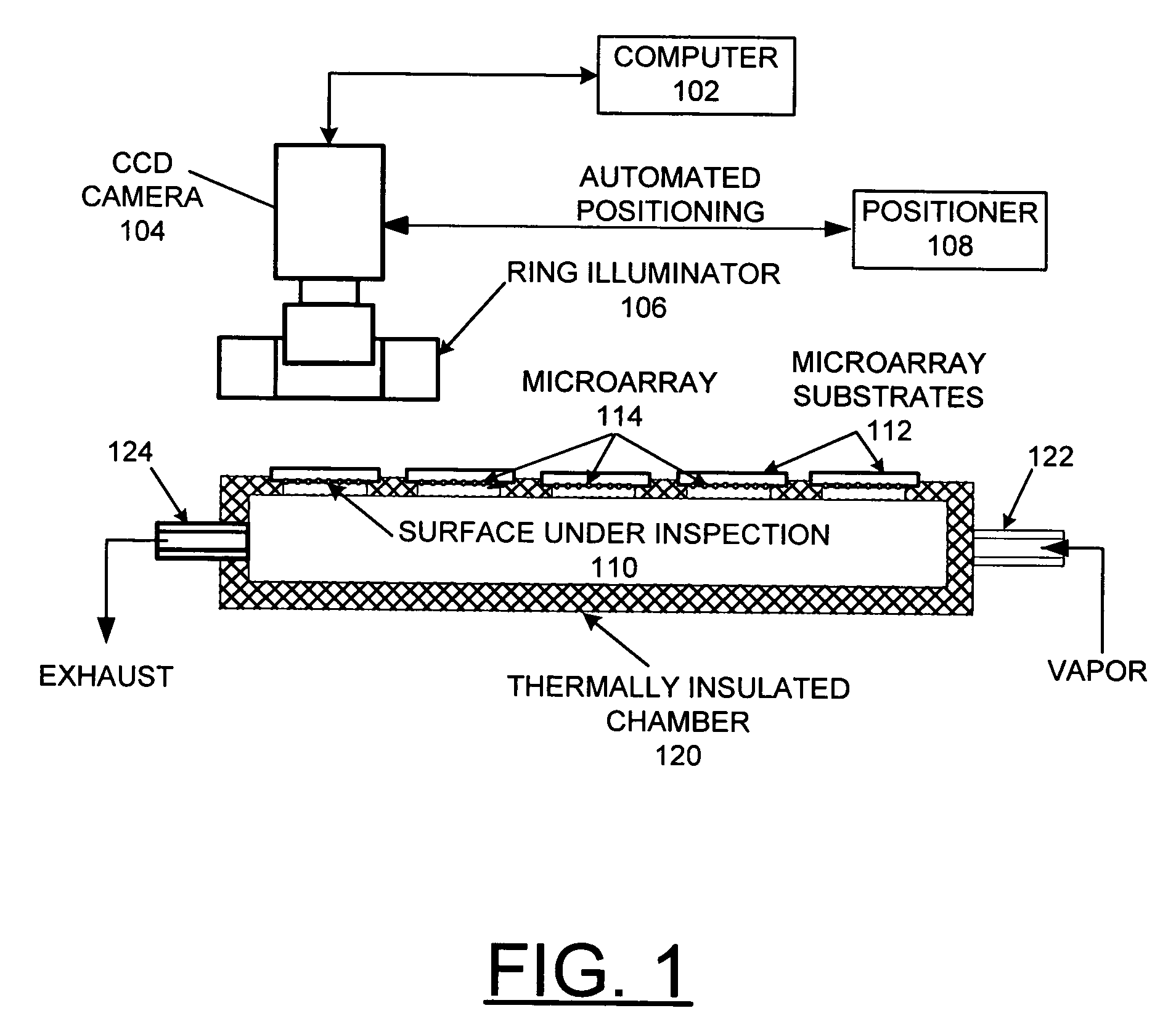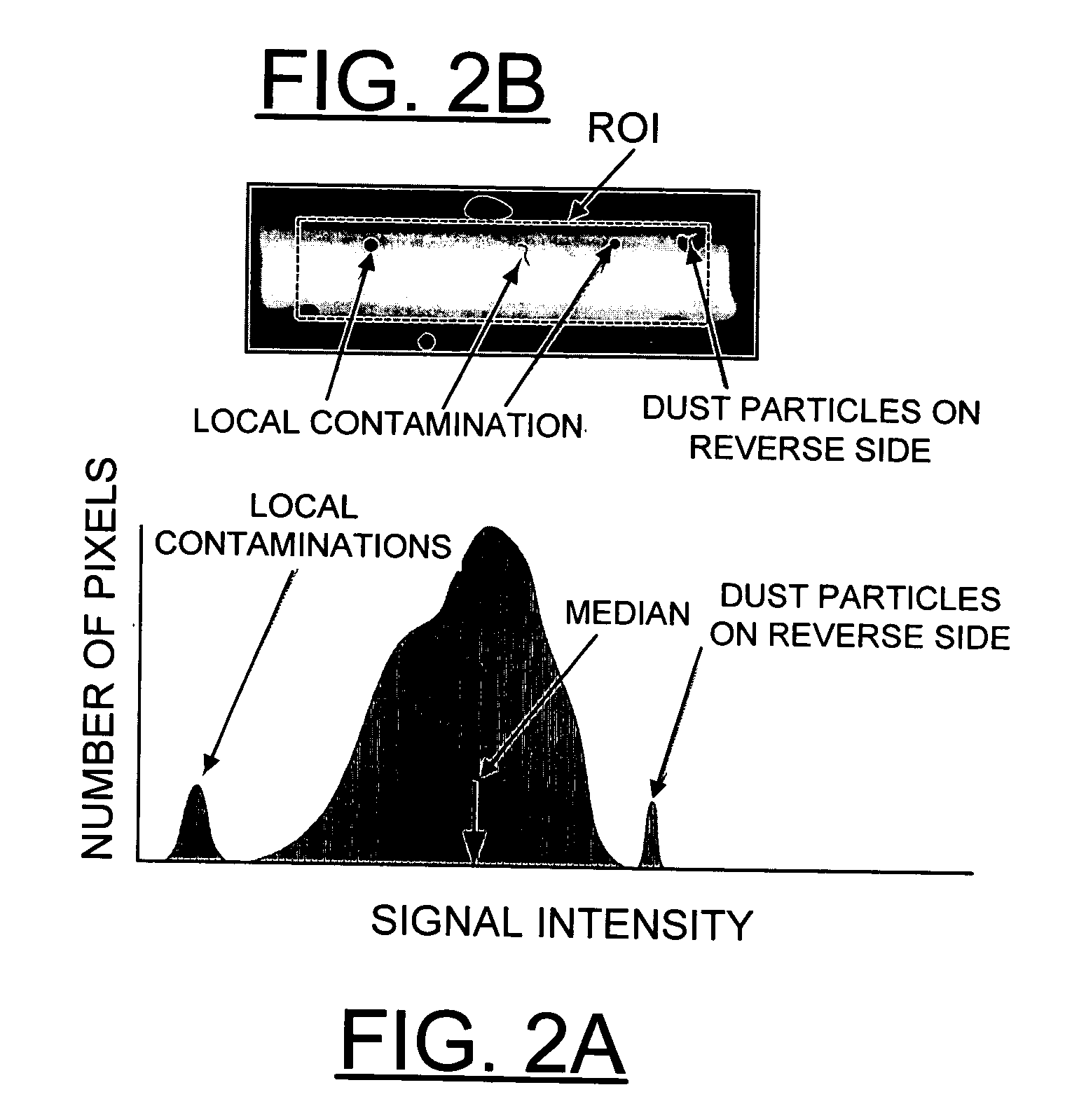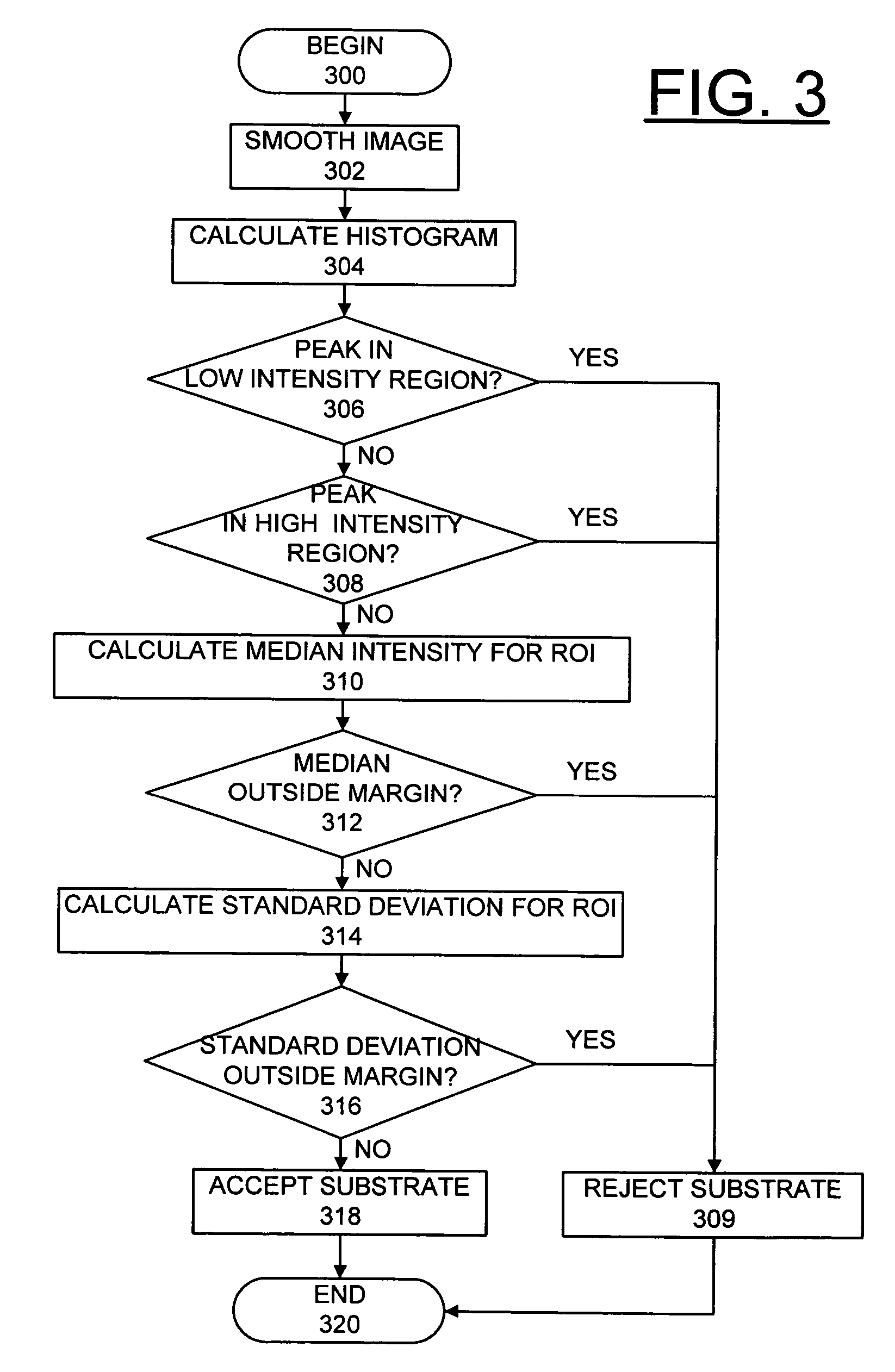Method and apparatus for implementing non-destructive quality control of substrates and printed biological microarrays, and for implementing quality control and visualizing gel-based microarrays prepared by dispensing gel-forming composition on solid surfaces
a biological microarray and substrate technology, applied in the field of methods and apparatus for the quality control of printed microarrays, can solve the problems of substantial variability in the bio-analytical characteristics and response or irreproducibility of analytical characteristics, affecting the yield of useable microarrays from any one manufacturing lot, and unable to achieve rapid, reliable, and non-destructive effects
- Summary
- Abstract
- Description
- Claims
- Application Information
AI Technical Summary
Benefits of technology
Problems solved by technology
Method used
Image
Examples
Embodiment Construction
[0022] As used in the following description and claims, the following definitions apply:
[0023] A biological microarray is defined herein as an array of biomolecular probes immobilized at spatially ordered locations on a solid substrate.
[0024] A biomolecular probe is defined as a synthetic or natural compound capable of specific interaction with biological molecules such as DNA, RNA, or protein.
[0025] Biomolecular probes may be delivered to the immobilization sites on the substrate by any known dispensing technique, either contact or non-contact.
[0026] The process of dispensing probes onto a substrate is defined as a printing method. Accordingly, microarrays fabricated by printing are referred to as printed microarrays, as opposed to microarrays fabricated by synthesizing the probes on the substrate, in situ. In the process of printing, the probes are typically dispensed on the substrates as one component of an aqueous solution.
[0027] In the preferred embodiment, the printing so...
PUM
| Property | Measurement | Unit |
|---|---|---|
| contact angle | aaaaa | aaaaa |
| transmission | aaaaa | aaaaa |
| size | aaaaa | aaaaa |
Abstract
Description
Claims
Application Information
 Login to View More
Login to View More - R&D
- Intellectual Property
- Life Sciences
- Materials
- Tech Scout
- Unparalleled Data Quality
- Higher Quality Content
- 60% Fewer Hallucinations
Browse by: Latest US Patents, China's latest patents, Technical Efficacy Thesaurus, Application Domain, Technology Topic, Popular Technical Reports.
© 2025 PatSnap. All rights reserved.Legal|Privacy policy|Modern Slavery Act Transparency Statement|Sitemap|About US| Contact US: help@patsnap.com



